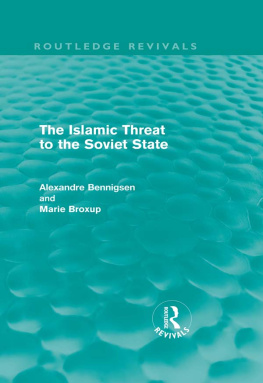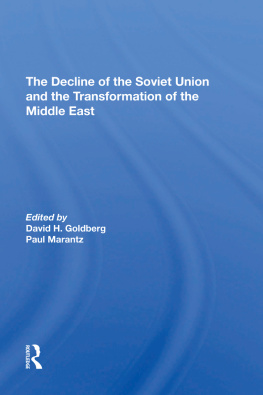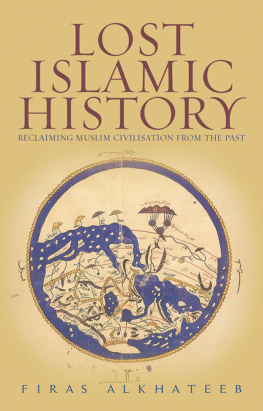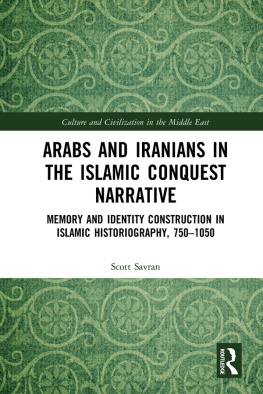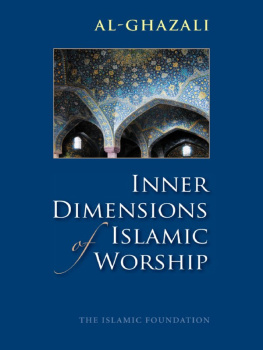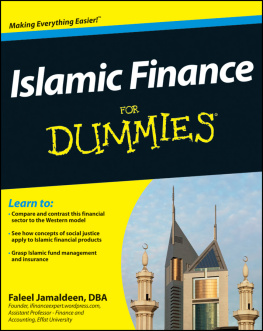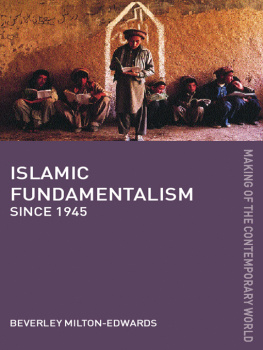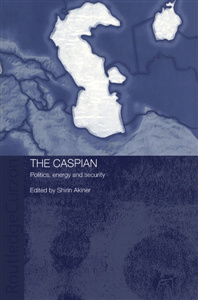Islamic peoples
of the
Soviet Union
ISLAMIC PEOPLES
OF THE
SOVIET UNION
(with an Appendix on the non-Muslim Turkic
peoples of the Soviet Union)
An historical and statistical
handbook
Second Edition
Shirin Akiner
First published in 1983 by
Kegan Paul International
This edition first published in 2010 by
Routledge
2 Park Square, Milton Park, Abingdon, Oxon, 0X14 4RN
Simultaneously published in the USA and Canada
by Routledge
270 Madison Avenue, New York, NY 10016
Routledge is an imprint of the Taylor & Francis Group, an informa business
ShirinAkinerl983, 1986
Transferred to Digital Printing 2010
All rights reserved. No part of this book may be reprinted or reproduced or utilised in any form or by any electronic, mechanical, or other means, now known or hereafter invented, including photocopying and recording, or in any information storage or retrieval system, without permission in writing from the publishers.
British Library Cataloguing in Publication Data
A catalogue record for this book is available from the British Library
ISBN 10: 0-7103-0188-X (hbk)
ISBN 13: 978-0-7103-0188-8 (hbk)
Publisher's Note
The publisher has gone to great lengths to ensure the quality of this reprint but points out that some imperfections in the original copies may be apparent. The publisher has made every effort to contact original copyright holders and would welcome correspondence from those they have been unable to trace.
To my father
Abul Faiz Ziauddin Ahmad
Preface
The aim of this book is to answer three basic questions about the Islamic peoples of the USSR: who they are, where they are and how many of them there are. It is convenient to speak of them as Soviet Muslims, grouping them all together under a single, collective heading, but they are in fact quite disparate. For this reason it was decided to treat each ethnic group individually here. This has the advantage of demonstrating the great diversity of these peoples, but it also entails a certain amount of unavoidable repetition. Cross-references indicate the main points of contact between the various groups, but since each section is intended to be complete in itself, this has been kept to a minimum. The historical introductions try to show how each ethnic group was formed, when it settled in its present location and how it came to be part of the Soviet Union. Apart from this, politics have been avoided, since the subject is far too complex to summarize without distortion and deserves a separate study of its own. For the same reason, projections for the future have not been included. The sections on language give a very brief summary of the extraordinarily rich linguistic heritage of these peoples. In order to show the effects of living in a multilingual society, material has been included on such questions as the maintenance of the mother tongue and the development of bi-lingualism; also, on the availability of educational facilities and printed matter in the national languages. There are some topics, such as economic status and religion, on which very little information exists, but it was felt better to give what is available, even if it is very general, rather than to avoid such subjects completely. For those who are familiar with Soviet studies, some of this will be self-evident, but for others it may be useful to have it actually stated.
Preface to the Second Edition
In this new edition I have brought the statistical information up to date where possible. The results of the 1979 census are gradually being released and I have incorporated the relevant material. Some of the other sections have also been updated and revised. I am grateful for the comments of a number of Israeli scholars on the chapters dealing with Jewish peoples of the Soviet Union, i.e. the Karaims, Krymchaks and Tats. So far as the Karaims are concerned, there is a difference of opinion: the Karaims themselves insist that they are of Turkic origin, but some others, particularly non-Karaim Jews, believe that they are ethnically Jewish. There is insufficient evidence to decide the matter, so I have tried to reflect both views as far as is possible within the limited format of the present work. I also clarify the use of Karaim as an ethnonym.
There are areas in which far more detailed information would have been desirable, e.g. that concerning the status and occupations of women. Unfortunately, such information is not openly disclosed in the Soviet Union, so there is no way of knowing what the situation is other than in the most general terms. In comparing the life of Muslim women within the Soviet Union with that of those outside, even such vague indications as I have been able to give may be better than nothing. The same applies to questions of housing, income, use of national languages in schools and a few other topics. Perhaps one day it will be possible to remedy these shortcomings, but alas not yet.
London,
January 1986
Acknowledgments
I should like to take this opportunity to thank all the friends and colleagues who generously gave me their advice and, in particular, Dr M. Bainbridge, Lecturer in Turkish at the School of Oriental and African Studies, University of London, who suggested the format of the book. I am deeply grateful to my husband and son for patiently enduring the false optimism of my often repeated claim that I would be finished by next week. Finally, I thank my publishers for their courtesy and help.
1
Introduction
Before speaking of the Muslim or Islamic peoples of the Soviet Union it is important to define the sense in which these terms are used. Any commentary on Islam will explain that being a Muslim means submission to the will of God; further, that there are certain articles of faith, the roots of religion, which must be accepted, and certain actions, the branches of religion, which must be performed. The former include belief in God, His Scriptures and His Apostles. The latter are: bearing witness to the oneness of God and the prophethood of Muhammed; performing the daily prayers; giving alms; keeping the fast of Ramadan; making the pilgrimage to Mecca. What such an explanation omits is the essential reasonableness of Islam. It is not, as the above might suggest, a strait jacket of rules, but rather a religion of the possible. It presents an ideal (azimah), but accepts that it may not always be feasible to realize this; it recognizes, therefore, a doctrine of the permissible (rukhsah), which in effect means that people should do the best they can under the prevailing circumstances. It is acknowledged that the reasons for not performing any or all of the prescribed duties may be inner weakness just as much as external pressures, but this is purely a matter for the individual's conscience.
The question of whether or not a person is a Muslim does not depend, ultimately, on the way he lives, but on the way he perceives himself in relation to the world. Consequently, a wide range of commitment is accommodated within Islam and this tolerance is one of the religion's great strengths, taking account as it does of the natural ebb and flow of piety in the lives of individuals and of societies. Non-Muslims frequently overlook this factor and, basing themselves on a single, strict interpretation of the term Muslim, find it incomprehensible that so many people who do not observe the rules should nevertheless vehemently refute the charge that they are not Muslims.





